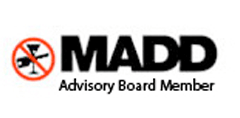San Diego Spinal Injury Car Accident Lawyer
The spine and neck are crucial in performing bodily functions. Any injuries to either location, which are sensitive to movement, can result in debilitating, damaging injuries. In all cases of suspected neck and/or spinal injuries, it is best to seek immediate medical attention and to speak to an experienced spinal injury car accident attorney. Car accidents are the leading cause of injuries leading to paralysis, according to theNational Spinal Cord Injury Statistical Center (NSCISC).
Although whiplash is a common injury sustained in a car accident, spinal injuries can also manifest when the body is whipped back and forth in a vehicle after an impact. The jerking forward and back motion, or whiplashing, in a collision applies stress to the spinal column and neck, resulting in serious damage.
Depending on the type and severity of spinal and neck injuries the following symptoms may be present:
- Vertigo
- Migraines
- Vocal cord paralysis
- Headaches
- Shoulder, neck, and/or back pain
- Severe leg and/or arm pain
- Numb feet, arms, legs, hands
- A burning sensation in the back of the neck
- Muscle weakness
- Swelling, redness, bruising, or an inflamed back or neck
- Inability to lift lightweight objects
- Temporary immobility or permanent paralysis
- Herniated discs
- Lumbar sprains
- Spinal stenosis
- The triggering of degenerative spinal disorders
- Discogenic pain from a damaged vertebral disc due to traumatic whiplash
- Facet joint fracture of the joints located between each pair of vertebrae in the spinal columns
- Dislocated facet joints
- Inflammed joints
- Torn cartilage between joints
Incomplete and Complete Spine Injuries
The higher up the spinal column an injury is sustained, the more damage and each case is classified as either complete or incomplete based on the motion and feeling that is below the injury site. Spinal cord injuries are not always immediately apparent. They may cause pain later.
Incomplete injuries indicate nerve communication in the spine is partially in place and that messages transmitted to the brain are being received. A complete injury usually means the survivor cannot feel anything below the injury site. There are some instances when surgery may help. Each case is different and the time to heal varies for each person. In general, spinal injury patients can return to near-normal life by using the life-enhancing products now available, such as epidural stimulation, electrical stimulation, and rehabilitation.
Cervical Spine Injury Locations and Outcomes
The treatment protocol for spinal injuries varies depending on the location of the injury. Injuries higher up the spine, the C1-C4 vertebrae are the most severe, as the individual requires 24/7 care, they may be quadriplegic, require assistance to breathe, may not be able to talk or cough, and may not be able to control their gut or bowels.
Injuries lower down the spine, the C5-C8 vertebrae may affect the nervous system that controls arms and hands, there may be pain and tingling, there may be complete or partial paralysis in the hands, torso, or limbs, it takes significant effort to breathe and talk, there is little or no bowel or bladder control.
Thoracic injuries, in the T1-T5 area, affect muscles in the middle of the back and abdominal area, and, upper neck, while the hands and arms remain normal. This may lead to paraplegia.
Thoracic injuries in the T6-T12 area generally result in paraplegia of the lower body, while the upper part performs normally. Bowel and bladder control are not consistent or there is no control.
Lumbar injuries in the L1-L5 area result in the lower limbs not always functioning properly and a lack of bowel and bladder control.
Sacral injuries in the S1-S5 area may impair the functioning of the lower limbs, although a patient may be able to walk. They do not have bowel or bladder control.
Changes Affecting a Spinal Injury Survivor’s Life Permanently
There are many individuals involved in helping a spinal injury car accident survivors move forward with their lives. An attorney may consult with life care planners to determine future, ongoing medical needs, such as medical care, various tests, medication, rehabilitation, counseling, and psychological assessment.
They also examine the cost of adaptive medical devices, adjusting the residence, adjusting transportation, care in an institution, medical and personal in-home care, and, consumable medical products. A financial planner can also document lost income for someone who deals with chronic pain daily, determines lost wages and, lost fringe benefits.
The ultimate goal of having other experts determine what a spinal cord injury survivor may face financially, physically, and emotionally, helps an attorney seeking compensation for the survivor and his or her family to adjust to their new reality.
Contact the Levinson Law Group Today
If you or a loved one were involved in a car accident and sustained a spinal injury, reach out to the Levinson Law Group attorneys right away. At the Levinson Law Group, our dedicated team of car accident lawyers is here to help. If you have questions about the recovery process, we can answer them. We make sure you are informed so you can make the best decision for yourself and your family.
When you decide to work with the Levinson Law Group, we are in your corner throughout the entire process. To learn more about your options, call the Levinson Law Group at 760-512-8088. We accept cases on a contingent fee. That means that if there is no recovery in your case, you pay no fee. And in most cases, we even advance the costs.







